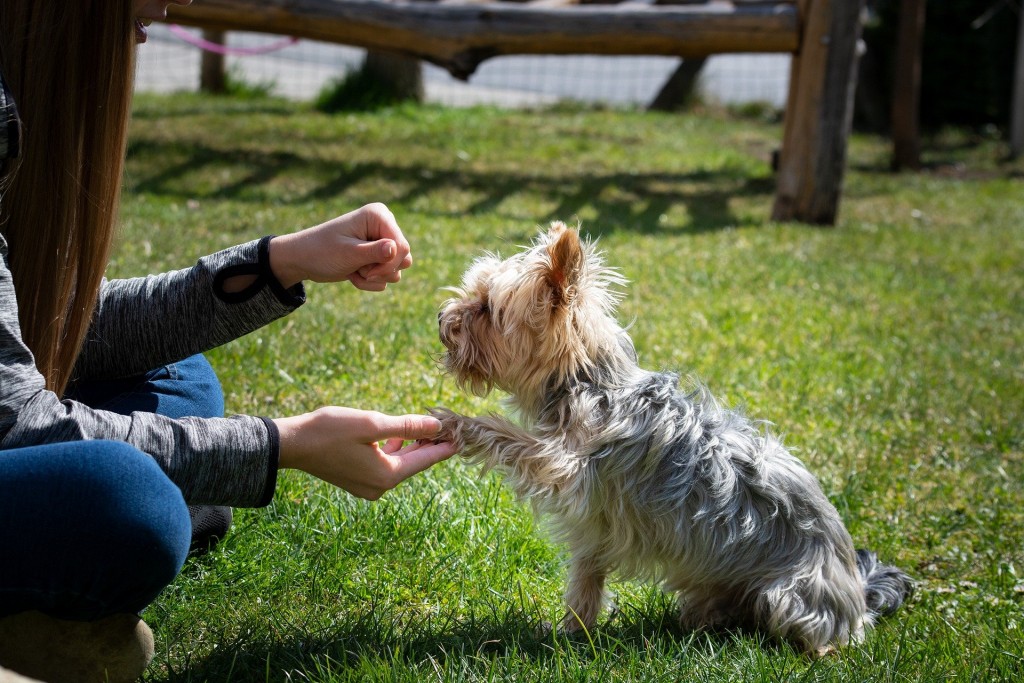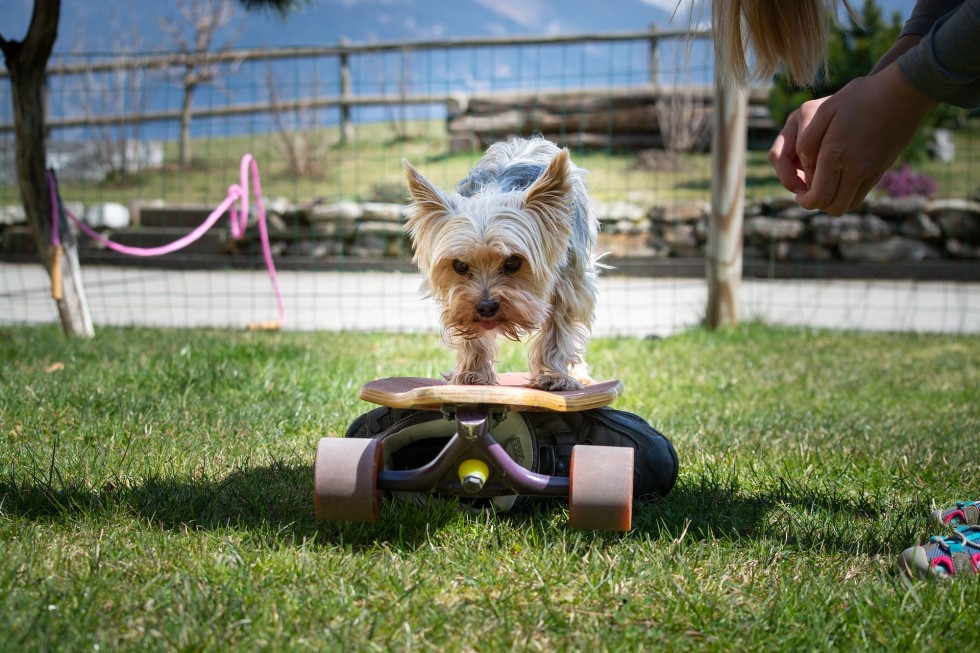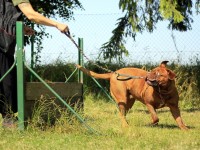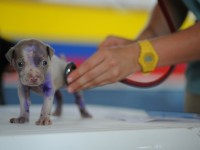Why you should train a dog
Having a dog, taking proper care of it and showing your pet all love and appreciation is not enough. You also have to teach it to behave and obey. Dog training is useful not only for the reason that your pup won’t do something wrong like jumping on people, ruining furniture, chewing shoes or biting, but it’s also very important both for the dog’s safety and for people, who may be around it.
People teach dogs different commands and tricks not only to have a well-trained dog and be proud of it when it does them in front of people. It’s also necessary to be able to keep a dog away from danger (like, making it walk near you and without pulling the lead to avoid car accidents and neck problems or teaching it to come when you call so that you could prevent a dog from doing something) or maintaining your house. Patience and discipline are just as vital for dogs as for children. But they have to learn how to behave both in human’s society and with other dogs as well. Besides, your pup will be able to interact with other dogs without any issues and it’s good for them to communicate with each other. If you have small children, you’ll be able to live your little ones with a well-trained dog without worrying that the latter will react terribly on some of the kid’s actions (like tail or fur pulling).
A trained dog will stay more or less calm when the strangers come to your house. It’s
good both for you and your guests (or service men), as you’ll get to communicate in a peaceful atmosphere and even get your pet involved. Besides, it’s better for the dog itself, as it learns to control emotions and doesn’t worry too much when unknown people step over the threshold of your home and come in.
Besides, once the dog gets used to strangers, it can join your company and enjoy spending time together, receiving extra attention, cuddles and maybe even treats.
A well-behaved dog may be brought to different events (when it’s allowed, of course). It may take part in various dog activities and competitions. Such dogs handle various stressful situations much easier, as you may tell it to sit or lie down and they’ll know that they’re supposed to go through this or that procedure (like receiving shots at vets’) and that everything is going to be all right.
Moreover, basic training prevents puppy from having toilet accidents inside the house and ensures stable eating and bedtime schedule. And, those are probably the most essential skills you want to develop in your dog in the first place. But, funny enough, they’re also the hardest ones to learn, as puppy is quite young when you start doing that and it’s much harder to work with it.
Actual dog training tips
Now, as we’ve figured out the benefits of dog training and understood that it’s quite necessary, I’ll tell you about the most important general dog training tips, which can be used with all breeds and personalities.
1. Who can train a dog?
Some specialists say that it’s possible to start early training of puppies that are 6-8 weeks old. Nothing too complicated, but the most basic things like going to the toilet outside and sleeping in its own bed. As a puppy grows, you may introduce more and more complex things and commands. When it comes to deciding on how you’re going to train it, there’re 3 options for you. The first one is to find a dog trainer or according classes. Go to HireRush.com and choose the category of Pet services, call several people, who provide services in your local area and arrange a meeting. As a result, you may find a perfect trainer and friend for your dog.
Professionals know what they’re doing, they’re aware of various techniques that could be applied on different dogs (depending on their breeds and personalities). There’re even such dog trainers, who would come to your house, pick up the dog, train it, walk it and even take it to the vets or groomers.
But, you are still going to be involved into the process as well, as the dog needs to learn to obey different people. And, its owner has to be on top of that list.
As another option, you may learn some tips from qualified dog trainers. Find some training classes on HireRush.com and visit one of them with your pet. The advantage of such classes is that you and your dog not only learn new stuff, but also that your pup gets an opportunity to socialize with other dogs and gets used to being around them without barking and fighting.
If you don’t want to spend too much money and are confident that you may train your puppy on your own, then you may find some books or useful tips and articles on the Internet and try to do it yourself.
Either way, you’re the one, who’s going to be with you dog most of the time, so following tips will come in handy no matter which of the options above you’re going to choose. They’ll allow you to understand and train your pup better.

2. Always express your affection and feelings
Yes, we never forget to tell a pet off or express our dissatisfaction when a dog does something wrong. And, nobody says that you shouldn’t. Otherwise, how is your pet going to know all dos and don’ts? But you should always remember to praise your dog, pet it, cuddle and play with it without any reason. Tell your doggy, what a good girl/boy she/he is when the pet executes commands or generally behaves well without any intervention on your part.
3. Give explanations
When a pet misbehaves or does something inappropriate, don’t say plain “No”, as a pet won’t understand what it’s supposed to do: stop completely or continue doing the same, but with even greater eagerness. It’s better to say “No, (Name), don’t jump on people” or “No, you’re not allowed on a sofa”. Of course, your pup won’t get everything immediately, but consistency is a key to the progress. Repeat the same formulations in similar situations, so the dog understands their meaning, as well as your intonation.
4. Provide your dog with its own space
It’s vital for a dog to have its own bed or crate to sleep in and just even have a quiet time there. It may also be the dog’s security place when someone unknown comes to a house and your pet is scared or doesn’t want to communicate. Besides, set up the bowls in one definite place, so that the dog has its own eating area (just like humans).
It’s such a common mistake to bring a puppy home and let it run around wherever it wants. Undoubtedly, it has to get acquainted with the whole house, but you should probably limit the dog’s living space by closing some of the doors and using baby gates. For instance, some people don’t allow their dogs upstairs or bring them there and let the pets stay only in their presence. Or, it’s even possible to set up a grate for a dog to put some water, a toy and its favorite bed in and leave a dog there while you’re gone. But, it’s not recommended to do so if the dog is too afraid of it. Besides, it’s possible to leave it there for 4 hours maximum.
If you have to leave your dogie for longer period and have no one to watch it, you may hire pet sitters to look after it while you’re out and about doing stuff.
As the time goes by and your dog becomes more trained and behaved, you may extend its freedom along with the living space.
6. Use treats wisely
There’s no harm in giving treats to a dog while teaching it some commands. It stimulates the dog to do better and makes your pet enjoy learning process. Moreover, it’s a nice (but sneaky) way to give your dog some tasty vitamins. But, don’t give too much treats not to develop bad eating habits. It’s also necessary to avoid the situation, when the dog behaves only after you give it a treat. So, maybe you should refrain from giving treats when a pet did something wrong and finally obeyed after you’d been stopping him/her from doing it. Reward a dog after it has performed one of the tricks.
Save most of the goodies the dog is allowed per day for intense training sessions or stressful situations. For instance, many dogs are afraid of a pet groomer, so if your pup is one of them, try to calm it down with your voice and explain that it’s OK and that nothing bad will happen. Don’t shout at the pet if it tries to eskape. Give it a treat in the end.
Also, some dogs don’t like certain kinds of treats, so be careful with that. Try different things and pay attention to your dog’s reaction to this or that product.
Besides, cuddles and nice petting are awesome reward as well.
If you suddenly want to give your puppy a treat without any particular reason, ask your little friend to do one of the commands and feed it something tasty afterwards (only special dog treats, of course).
7. Stick to your own rules
That’s easier said than done. Basically try not to allow something today and forbid it several days later. And, vice versa. If you generally don’t allow your dog jump on a couch when it hasn’t been invited or if it’s not supposed to sleep in your bed, don’t let it to under any circumstances.
8. Don’t expect everything happen at once
Be patient and consistent. It takes quite a while even for humans to learn something from each other. And, a dog needs to learn from someone it can’t even understand properly. Repeat the same steps over and over again each day, reward your dog when it does a good job and always finish training sessions by telling your doggy how amazing he/she did. Never shout at a pet when it can’t do the trick right away and don’t get irritated. Each dog is different, so are their learning abilities and speed. Express your love and support, be playful and kind to your little friend and encourage it to achieve greater results.





